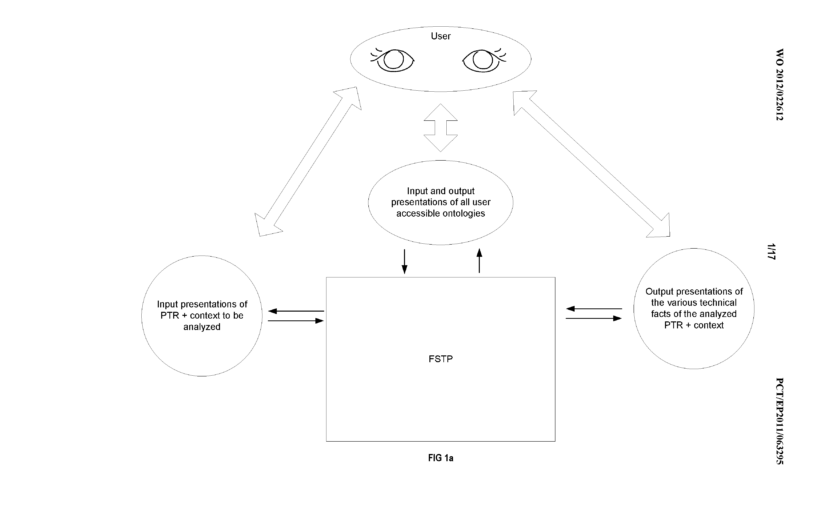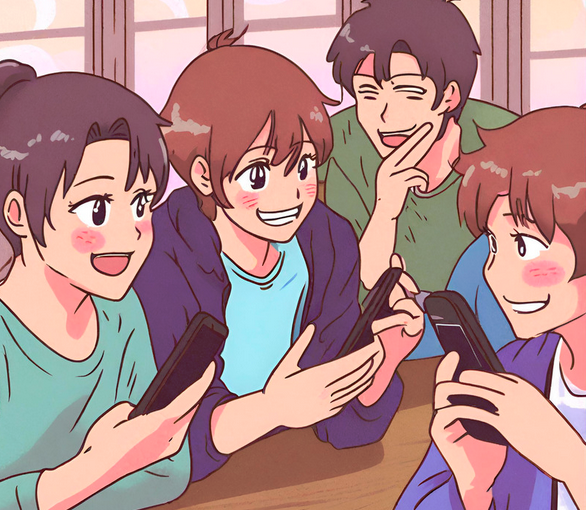This decision concerns information modelling by a user to create a data structure, where this modelling has no technical effect. Therefore, the modelling steps are considered as an aim to be achieved in a non-technical field and used for the formulation of the technical problem (COMVIK II). The data structure created by the user also has no technical advantage for a claimed subsequent query processing.
Object of the Invention:
- expert system for aiding patent administration and jurisprudence by providing (semi)automated support for assessing a patent or patent application (or other “endeavour”) for novelty and inventive step in view of “a national patent system or its Highest court precedents”
- the invention proposes to obtain from a patent (or patent application) p and any prior art document i elements of their respective technical teachings TT.p and TT.i
- the TT.i’s of the prior-art document i are collectively referred to as “RS” (reference set) and, in combination with the TT.p’s, as “PTR” (pair of TT.p and RS)
- the elements and their “relations”, expressing anticipation and contradiction between elements or sets of elements, are arranged in what is called an ANC matrix (“anticipates/non-ants/contradicts”)
- the information in this matrix can be queried by and is then displayed to the user
Board I (claim construction)
- the claimed method has two phases: the first phase leads to the creation of the ANC matrix which, in the second phase is used to “automatically and instantly” produce responses to user queries
- the major part of the first phase is done by the user
- only the processing of user queries is meant to be automated
Board II (technical effects and inventive step)
- the major part of claim 1 is a modelling procedure during which the user considers the items in the domain of interest, extracts their relevant properties, and “compiles” them “into” a formal language
- following T 49/99, this procedure of information modelling to be an intellectual activity
- (effectively a method for performing mental acts, Article 52(2)(c) EPC) which does not, per se, contribute to the technical character of an invention
- for this conclusion it is immaterial that the present application does not even relate to the modelling (let alone simulation) of a physical system but to the modelling of what a given set of documents discloses and how they relate to each other
- accordingly, a technical contribution of the present invention could only lie in the way in which the generation and use of the model are implemented
Appellant I (technical effects and inventive step)
- particular features of the ANC data structure had to be considered to be technical
- in particular that the ANC had to reflect the analysis of documents in terms of two different levels of granularity (“elements” and “fundamental facts of these elements”) and that it contained novel fields (e.g. “anticipates/not-anticipates-and-not-contradicts/contradicts” as claimed)
Board III (technical effects and inventive step)
- the appellant did not argue that the particular ANC data structure had a specific technical advantage for the subsequent query processing
- the appellant was thus unable to convince the board that the modelling steps caused any technical effect
- when, however, the modelling steps are assumed to be taken as an aim to be achieved in a non-technical field – according to established jurisprudence of the boards of appeal (see T 641/00, headnote 2) – the form of the ANC is determined by the model and thus obvious
- the computer support specified in claim 1 does not go beyond the general statement that a computer is used to support the users in their task
- likewise, the feature that users may query the “items” in the ANC and the method replies “automatically and instantly by displaying to the user this item’s information and all its such relations to other items” does not, in the board’s judgement, go beyond the statement that the information in the ANC may be accessed by user queries, as is known from prior-art database systems
- –> claim 1 lacks inventive step in view of common knowledge, as an obvious way of providing computer support to an essentially non-technical method


